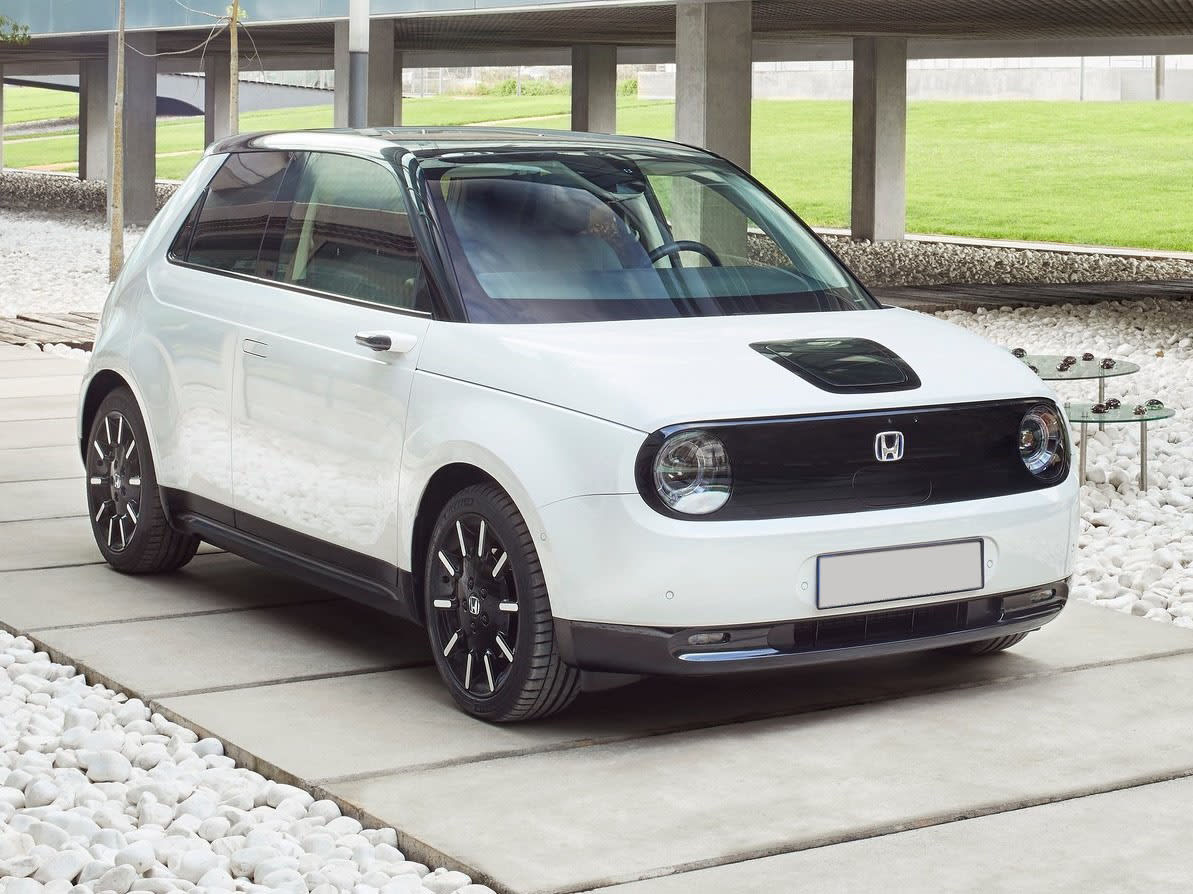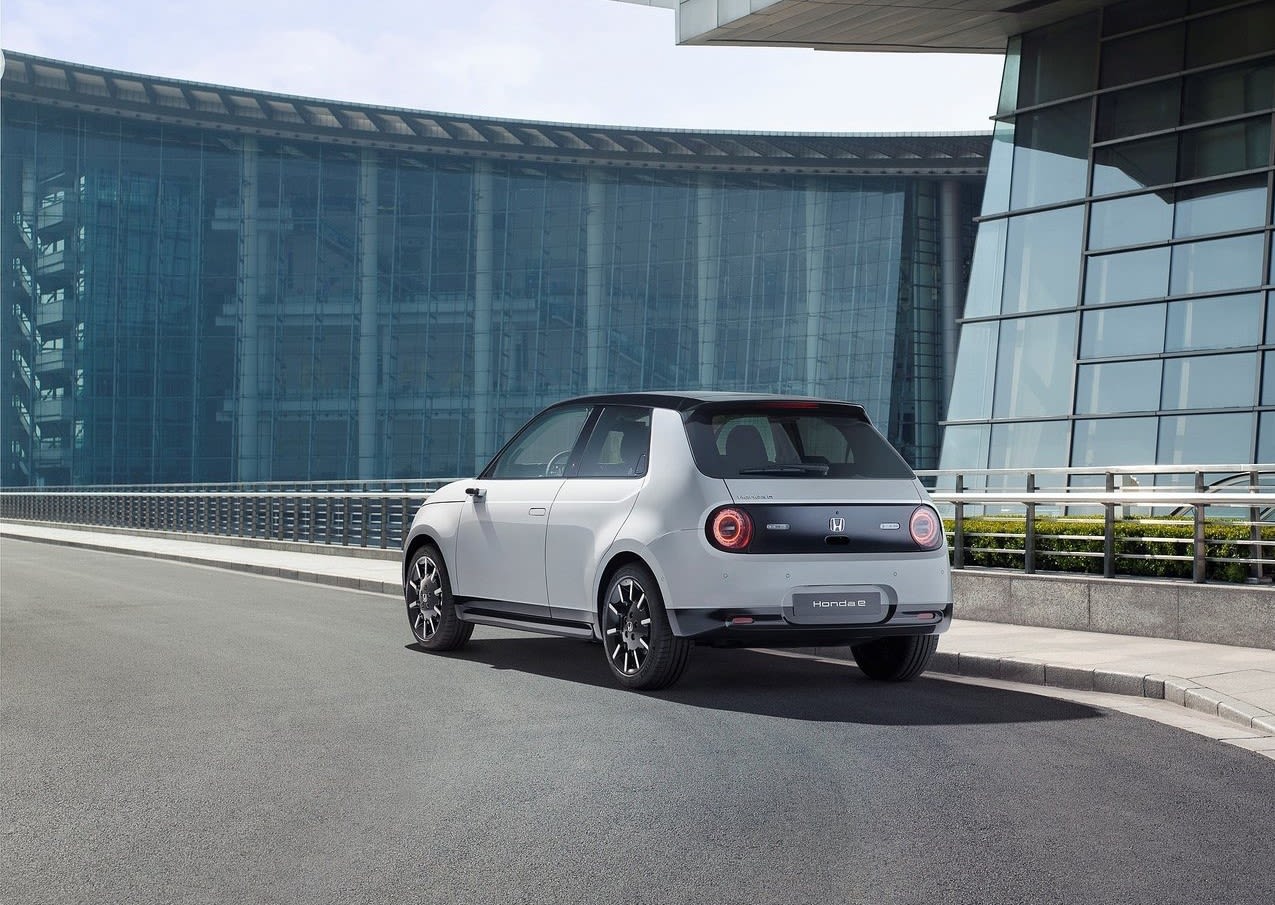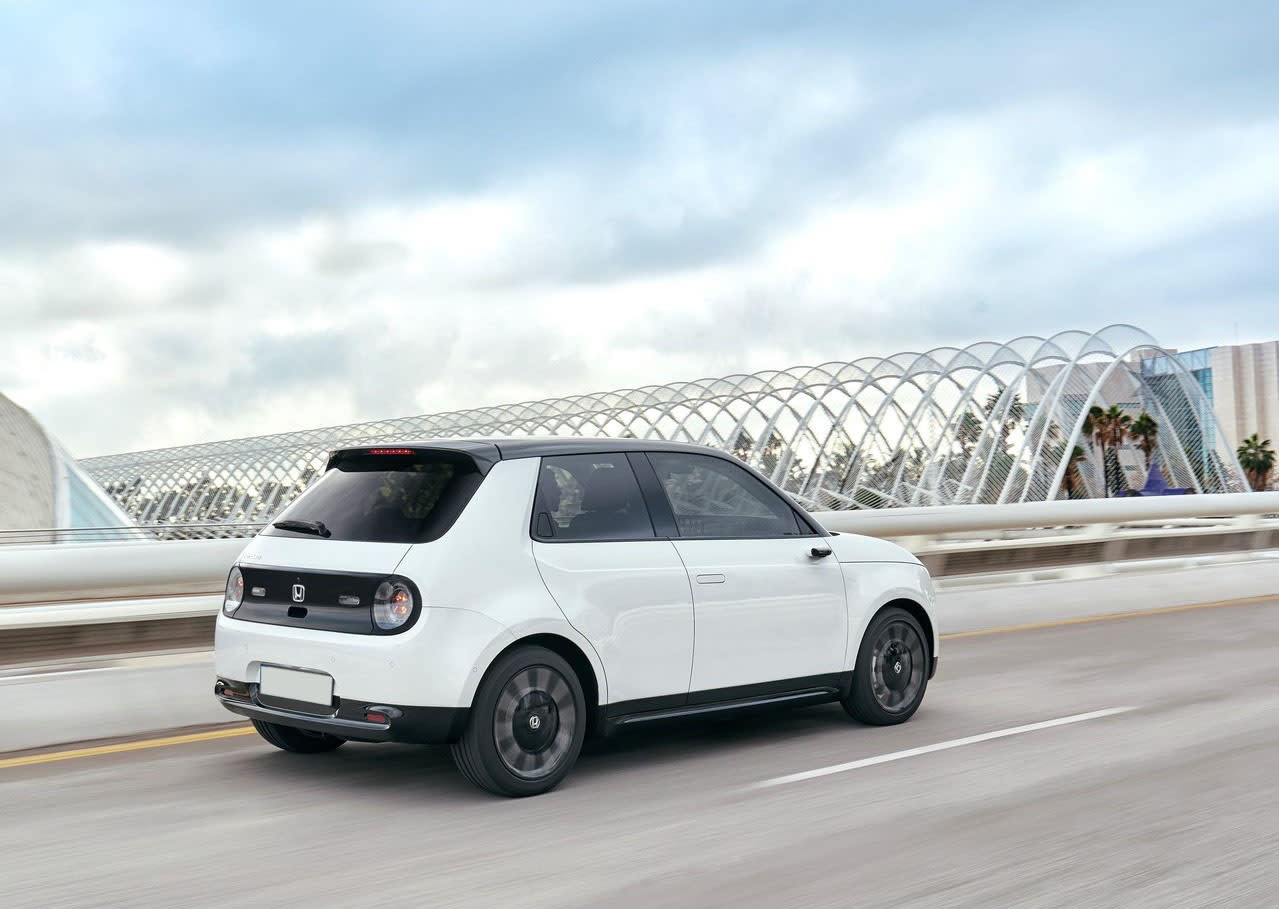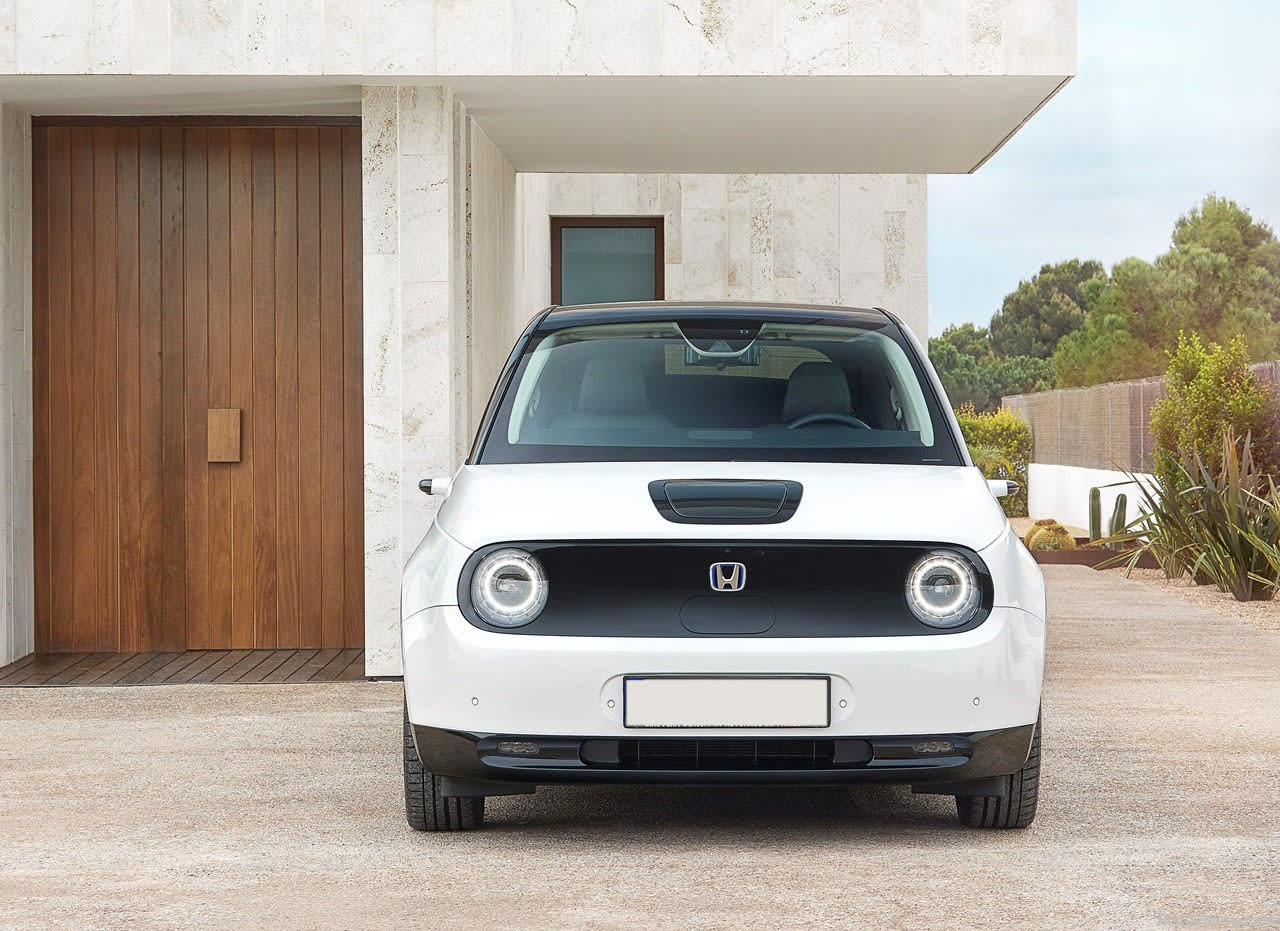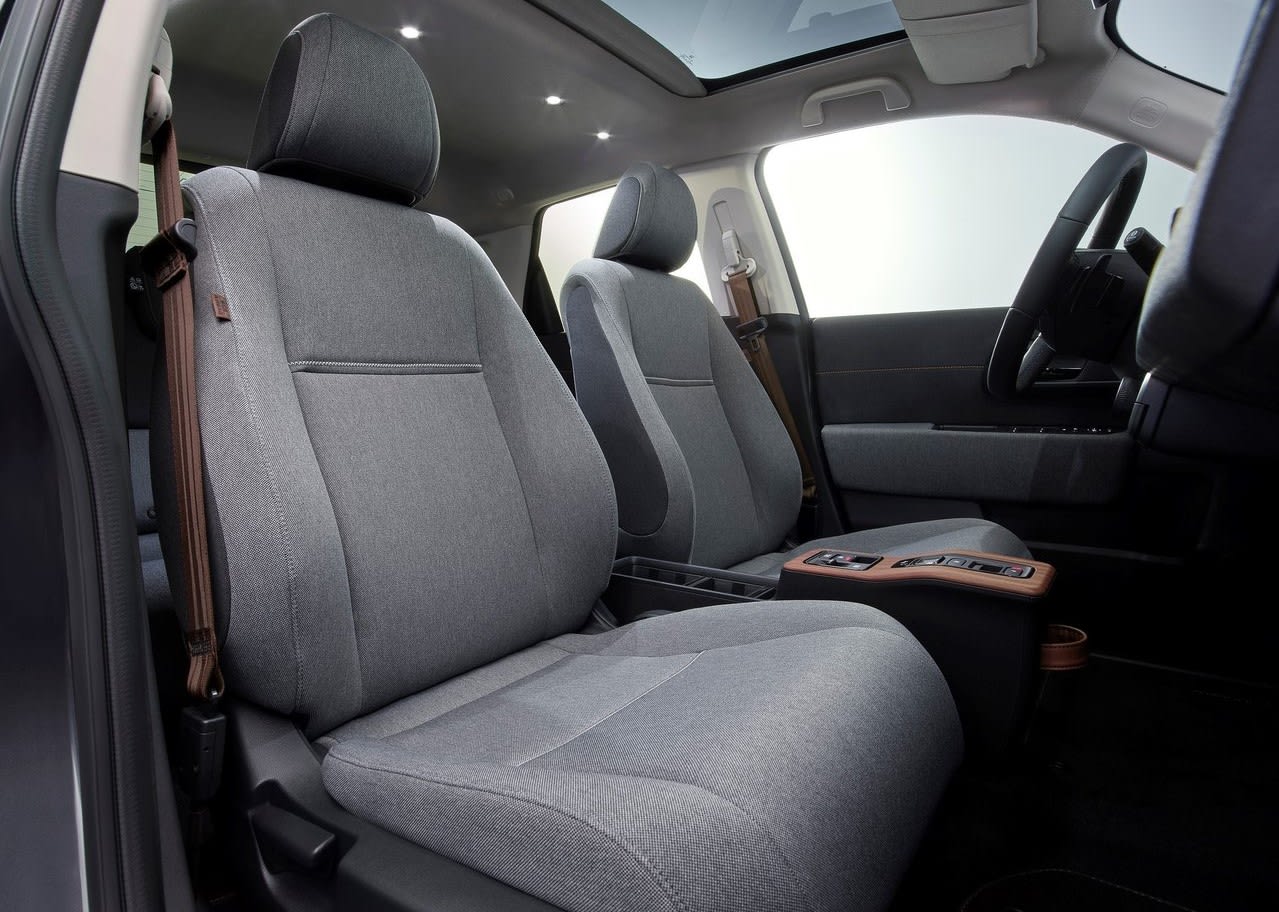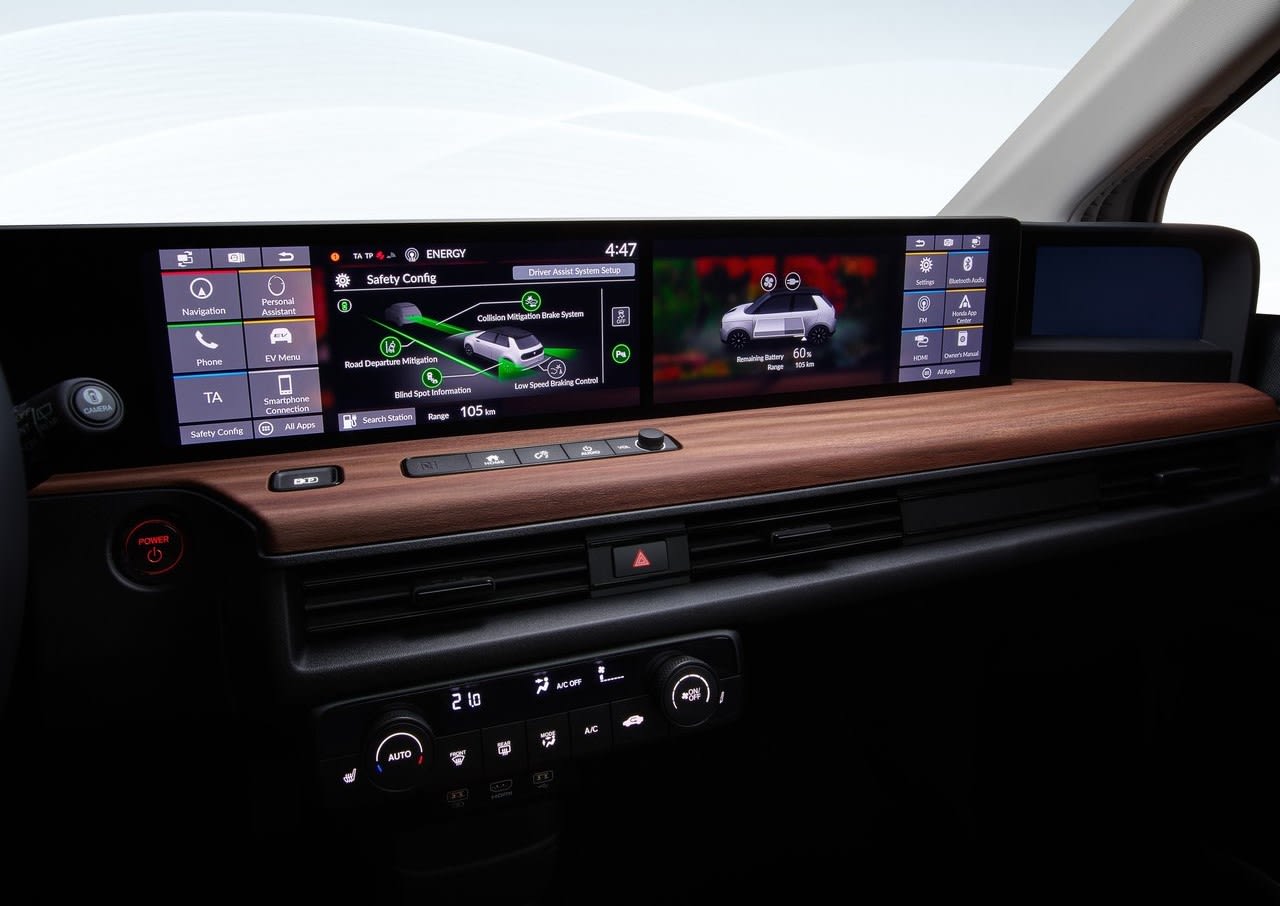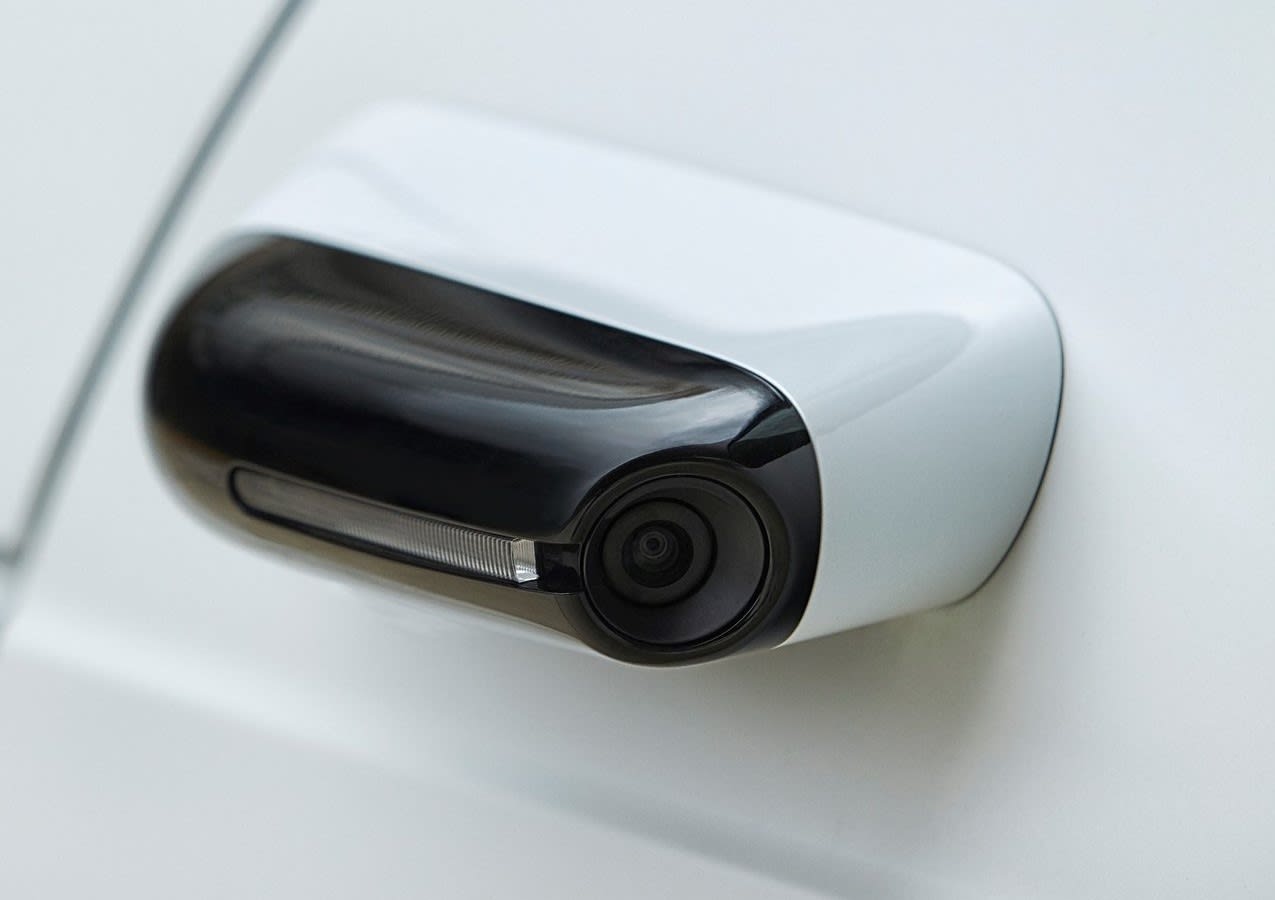
Honda e Review

Introduction
Once in a while, a car comes along that simply breaks down barriers. The Volkswagen Golf GTI was loved by both bankers and bank robbers, and the Range Rover is as popular with Arsenal players as it is with aristocrats. It’s the same story with the Honda e – a car that couldn’t be more cute if it came with a boot full of puppies. But unlike the Fiat 500, the little Honda is trading on more than just its image. As a high-tech, rear-wheel-drive electric hatchback, it’s managed to appeal to petrol-heads, tech geeks and fashionistas in equal measure. But does the finished product make good on the promise of the headlines?
Review Sections
Select's rating score* - 3.5 / 5
At a Glance
A tiny, manoeuvrable electric hatchback with a firm focus on urban journeys, the Honda e looks and feels like the future. Although its retro design and electric powertrain conjure thoughts of the Mini Electric and Fiat 500e, it manages to feel completely different in the metal. With cameras instead of door mirrors and a bank of screens across the dashboard, it’s a high-tech, spaceship-style cabin, and although it isn’t the roomiest car on the market, it feels roomier than it is – particularly from the front.
Key Features
Performance & Drive
At 1.5 tonnes, this car is heavier than a Nissan Qashqai, and that gives the suspension a lot to do over undulating roads and severe potholes. For the most part, it does okay, but every now and then it’s caught on the hop, causing either a sensation of instability or a jolt through the seat. Sometimes both. Stick to towns and cities, though, and you’ll enjoy a reasonably supple low-speed ride that suits the silence of the electric motor.
Running Costs
With an electric motor under the bonnet – or indeed the boot, in this case – there’s no worrying about fuel bills in the Honda e. You do have to worry about filling up, though, because the e’s range is far from generous. The 137-mile range is fine for shopping and the school run, but it’s far from ideal for long trips; this is definitely a car for local journeys.
If you have a drive and you can install a smart charging point that manages the charging process for you, electricity should be far cheaper than petrol, but beware that charging away from home isn’t always the cheapest process in the world. If you aren’t venturing far from your local town, however, that shouldn’t be an issue.
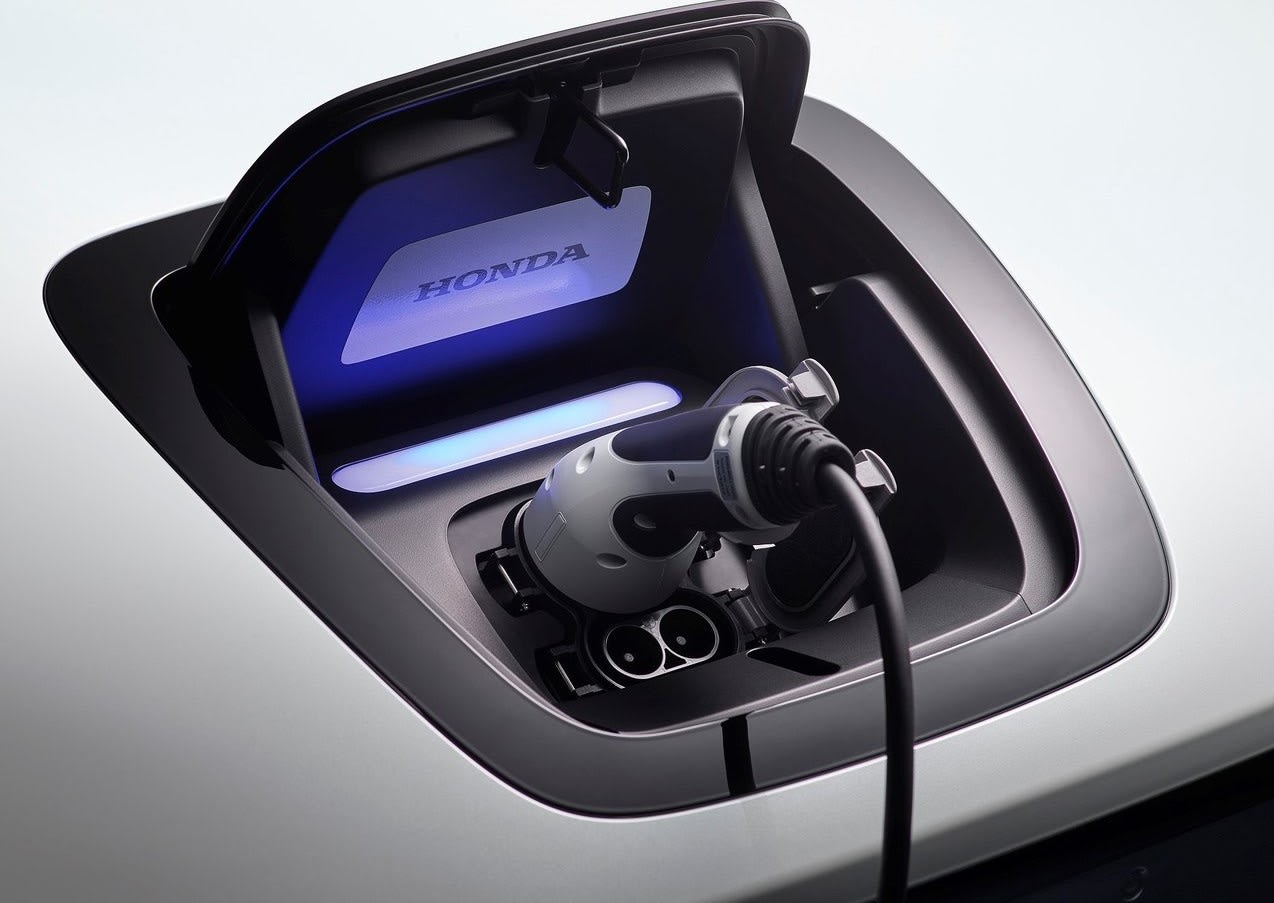
Emissions
Interior
All of which is slightly at odds with the olde-worlde ‘wood’ trim, which not only feels slightly cheap but also looks out of place in this cabin. It’s as though Honda was trying to pull off the modern Scandi vibe, and it hasn’t quite worked.
Technology
Practicality & Boot Space
As you might expect from a car that measures less than four metres in length, space is at a premium in the e. There’s seating for four, rather than the more traditional five, which means you at least get proper seats – no super-narrow pews to fit a barely functional central perch in the middle of the rear bench. Leg- and headroom isn’t that bad – it’s fairly average for cars in this class – and the rear seat is relatively comfortable.
At the front, though, things are noticeably improved. Although there isn’t that much space in there, the cabin feels light and airy; much less of a cocoon than some conventionally powered cars.
The boot space, meanwhile, is a little tight, thanks largely to the way the motor is stowed under the boot floor, driving the rear wheels. With 171 litres of space, it’s way behind the likes of the Mini Electric and even the Seat Mii Electric. Even folding the rear seats down doesn’t help that much, freeing up an extra 400 litres of space. A VW T-Roc has more than 400 litres of boot space with the seats up, and that’s hardly a giant among family cars.
That wouldn’t be so bad were there more room for bits and bobs in the cabin, but aside from a few useful cubby holes, there isn’t that much to write home about. You get a natty pocket at the base of the dash that’s perfect for a mobile phone, but otherwise it’s ordinary at best.
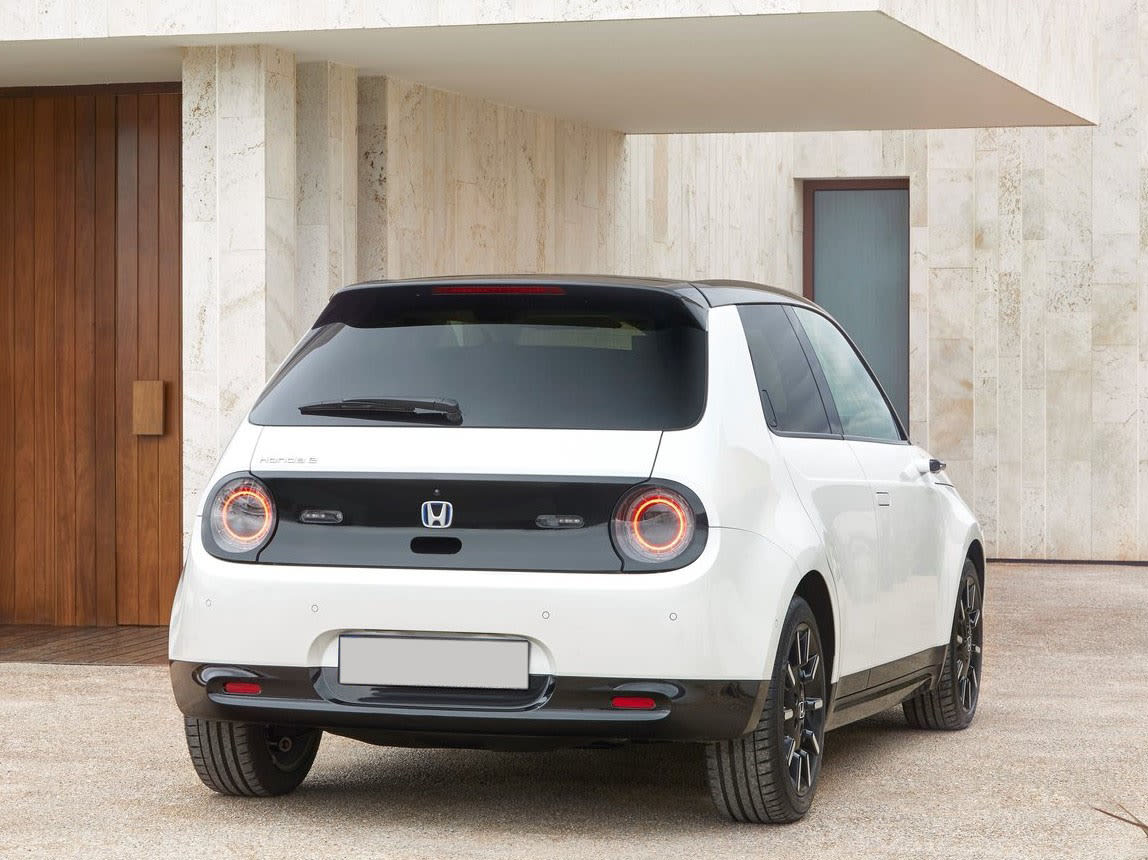
Safety
Options
The relatively simple Honda e range gives you a choice of just two trim levels, with the standard car joined by the slightly more high-tech Advance model. Both cars have the same range, but the Advance benefits from a little extra power and performance, as well as a few choice features.
As standard, the basic Honda e comes with climate control, alloy wheels and heated seats, not to mention the little cameras that replace the door mirrors and the 12.3-inch dual touchscreen that stretches across the main body of the dashboard. All that is joined by automatic LED headlights, keyless entry and rear privacy glass, plus the Android Auto and Apple CarPlay smartphone integration systems.
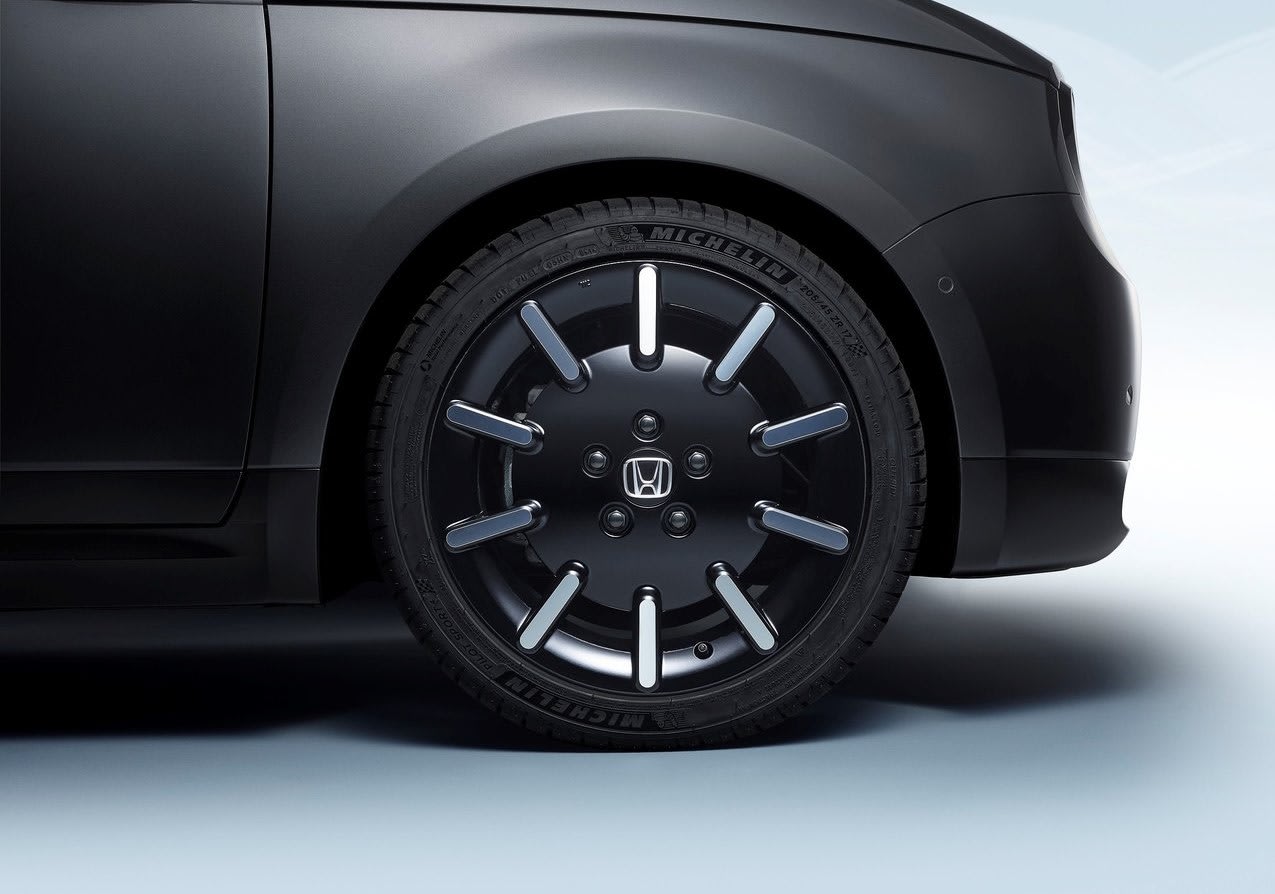
Then there’s the safety technology, which includes autonomous braking that automatically slams on the anchors to avoid (or at least reduce the impact of) an accident, as well as adaptive cruise control that maintains a safe distance to the car in front. Parking sensors are found in both the front and rear bumpers, too, while parking bumps are also made less likely by the standard reversing camera.
All that means the Advance model is built on well-endowed foundations, but it adds value in the shape of a front windscreen de-icer and a self-parking system, as well as a more advanced manoeuvring camera system. The more luxurious variant also benefits from a heated steering wheel and a “premium” eight-speaker audio system.
The options list is relatively small, but you get a choice of alloy wheels, and there’s a range of five colours, including a bold green-ish yellow colour and an electric blue. You also get the option of a U.R.B.A.N. pack in either blue or black, which adds some extra aesthetic trim, and an Illumination Pack that gives you ambient interior lighting. A handful of other extras, including leather upholstery and sticker sets for the bodywork are also in the offing.
Rival cars
Alternatives to the Honda e aren’t as numerous as you might imagine. Although this is a section of the market that should be ideally suited to battery-powered motoring, manufacturers have sought the larger profit afforded by far bigger vehicles, and the city car market has been somewhat neglected. But alternatives are beginning to trickle down, with the Fiat 500e representing perhaps the sternest test. Like the Honda, it’s a wilfully stylish hatchback with full electric power and a hint of modern retro cool.
Then there’s the Mini Electric, which is a little larger than the Honda but no less desirable and also inspired by the cars of the past. It’s great to drive, too, just like the petrol-powered Minis. Or you could look at the Seat Mii Electric, Skoda Citigo iV or VW e-Up!, all three of which are essentially the same exceptional hatchback with varying badges and names. Despite their undeniable qualities, though, they feel dated when parked alongside the Honda.
For something a little more up-to-date, consider the Renault Zoe, which is also a little more practical than the Honda and a little less stylish. But it’s a great electric hatchback that ticks plenty of boxes for those who want a conventional supermini with the benefit of electric power. The range is decent, too, which will also be a boon to many customers.
Verdict & Next Steps
As with so many electric cars, the Honda e will only really work in a select set of circumstances. As your primary form of transport, it’s hampered by a modest range and limited interior space, but as a second car – an urban runabout for shopping and the school run – it’s brilliant. Enjoyable to drive in town and more than capable of zipping around in eco-friendly silence, it will soak up admiring glances with a smile on its innocent, retro face. If this is the future of urban mobility in a post-Covid world, bring it on.
Where to next?
View latest Honda e car leasing deals- from just £303.88 per month inc VAT**
Looking for a great leasing deal? Check out our incredible range of car lease deals
New luxury city car? Read our latest Car Reviews and find the right model for you
Want to know more about leasing? Take a look at our comprehensive Leasing Guides
Interested in everything motoring? Why not catch up on all the latest Car Leasing News.
*Score based on Select’s unique meta score analysis, taking into account the UK’s top five leading independent car website reviews of the Honda e
**Correct as of 25/03/2021. Based on 9 months initial payment, 5,000 miles over a 48 month lease. Initial payment equivalent to 9 monthly payments or £2734.88 Ts and Cs apply. Credit is subject to status.
